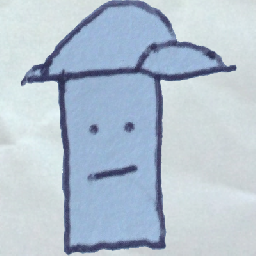Neat. What plastics lack in absorbancy, this might make up for by having wells where condensation could drain into. Could also prove a veritable mold farm I suppose. Might try this with tpu as mesh layer to reduce slipperiness.
I’ve made similar coasters a while ago, just with a stone tile as the base. Despite having to endure a cup of hot tea every day, it’s holding up very well so far and stays clean.
The PETG did minimally deform after months of using it, which is both good and bad. On one hand it’s now formed in a way that perfectly fits the specific cup I use, but that also means that it’s become a bad fit for every other cup or glass.
Your comment about using TPU has given me the idea however to make the tile reversible with the current PETG on one side and Flex material on the other.
That is why I regularly disassemble mine and toss them in the dishwasher to prevent mold and to clean them from dust and drinks.
toss them in the dishwasher
Does your dishwasher have a cold wash setting or did you print these in ABS or something?
It has a 60°C short program. Fiberlogy PETG doesn’t warp at those temps.
Gotcha. I’m not sure I’ve ever had a dishwasher with that functionality.
❤️⭐🔥
That’s a neat idea! TY!
Hey! I was thinking about doing this.
Any useful info, should o give it a go?
If your printer is tuned well and is direct drive, there should be absolutely nothing in your way. Just print the parts separately and, if you want, in different colors. Happy printing!
Where’s the best place to learn to design things like this? I’ve played with Tinkercad, watched a few videos, and done the tutorials, but i still struggle with actually completing a design. Right now I’m trying to make a mesh football that’s open on both ends to make a zoomball. It shouldn’t be that hard! Why can’t i get it right?!
Maybe I’m an oddball here, being just a hobbyist and not an actual engineer doing things, like, mathematically or whatever; I just use Blender and fiddle around until I have shapes I want, export that to a format my slicer can read and then the slicer does all the other actual work of making it printable.
It would be easy as hell to take a spheroid, make it football shaped, and then hollow out the middle and cut off both ends, then go and punch out holes to make the mesh pattern. At least in Blender.
Any videos on this. I feel like the way I use blender is really inefficient
I just taught myself by playing around with the program years ago. I think it even has built in video links to learn, these days. The official website has resources like that to help, too.
Just making a simple box in blender feels so inefficient for me. I gotta get a cube, slice it in half, take another cube and use that to so some kind of negative intersection cutting. It feels so wonky. I’ve come from stuff like solidworks where you just draw shapes and cut them, it feels much better.
Apologies for such a belated answer, but I would advise you to steer clear of Tinkercad. It is fairly limited in what it can do, and the skills you acquire there don’t really transfer to more advanced CAD software. If I were you, I’d start in Fusion 360, even though I don’t like it and use FreeCAD myself, because it’s beginner friendly and there are a lot of tutorials on how to use it and for what. I would also advise you to start with something simple, like a hook for example. It is a fairly steep learning curve, and there are quirks if you are making something for 3D printing specifically. If you want more info, don’t be afraid to DM me, I’ll try to set you on the right path. Cheers!






